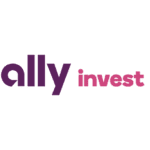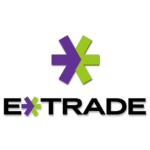Want to trade stocks? You’re going to need an online broker, and that broker should offer a reasonable investment minsimum, high-quality trading tools, robust access to customer service and no hidden account fees. On these measures, the brokerage firms below earned their place on our list of the best online brokers for stock trading. Best Online Brokers for Stock Trading 2023.
Read 5 Best Brokerage Accounts For Beginner Investors 2023.
Table of contents
Ally Invest – Best Online Brokers for Stock Trading
Read also this FintechZoom article: How to Trading Online? The Complete Guide.

Low rates and fees and a great user interface Pros
Rock-bottom rates
Easy entry point
Stellar ratings Cons
No futures trading
Rock-bottom rates
With no inactivity charge and a $50 full outgoing transfer fee, Ally Invest’s fee structure is about as low as you’ll find. Ally keeps its edge with a zero account minimum and enticing discounts for active investors — equity trades drop to $3.95 for users with 30-plus trades each quarter or a balance of $100,000. In October 2019, Ally also followed in the footsteps of mobile platforms like Robinhood and announced totally commission-free stocks and ETFs. Lastly, Ally Invest’s platform and resources stand out with quality research and tools, including access to its online trader network.
Easy entry point
In addition to attractive pricing, Ally offers a quality platform that gives you access to the entire universe of stocks and ETFs. Where some discount brokers focus on only one kind of trader (for example, options traders or high-net-worth investors), Ally Invest provides an excellent experience for investors of all kinds. A focus on discounted costs can sometimes be a red flag for quality, but Ally truly delivers with sophisticated calculators, profit-loss estimators, and more. Ally also offers a robust research library that incorporates visual slides and interactive media into its market data.
Stellar ratings
We’re not the only ones who think Ally Invest is a remarkable service. Barron’s has given Ally Invest’s past self, TradeKing, at least four out of five stars for the past 10 years, and Ally continues to rack up kudos for its offerings and low commissions from both Barron’s and other rating sites like StockBrokers.com.
Points to consider
No futures trading
If you want to trade “futures” (agreements to buy or sell assets in the future), Ally Invest isn’t an option. That’s not unusual for an online stock broker — neither Robinhood, Vanguard, nor Fidelity offer futures trading — but you can do it with some of our other top picks, including E*TRADE, Charles Schwab, Interactive Brokers, and TD Ameritrade.
E*TRADE

Another great entry-level platform if you make lots of trades Pros
No commission fees
Education-heavy platform
No minimum account balance
No commission fees
Following the lead of financial disruptors like Robinhood, E*TRADE has eliminated retail commissions for online U.S.-listed stock, ETF, and options trades, effective October 7, 2019. This is a huge boon to active traders and beginner investors within the U.S. Previously, its commission fees started at $6.95 (discounted to $4.95 if investors made more than 30 trades per quarter), which was on the higher end of the spectrum compared to Ally Invest, Charles Schwab, and Fidelity.
Education-heavy platform
New investors need two things from their online stock trading platform: an easy learning curve and lots of room to grow. E*TRADE has both. Its platform boasts a library of educational videos, articles, and webinars for each type of investor. Once you’ve mastered the fundamentals, read up on market news, reports, and commentary from E*TRADE analysts. You can also take advantage of one-on-one assistance: Branch appointments are free to book, and online chat tools and 24-hour hotline are there to guide you from anywhere in the world.
Read also Position Trading Basics: The Best Time To Enter A Trade.
No minimum account balance
As of December 2019, E*TRADE does not require an investment minimum for brokerage accounts. Previously, its required account balance was $500 – which was lower than traditional brokerages but still more than a novice would like to throw in.
TD Ameritrade

A powerful, beautifully designed platform Pros
Helpful platform for beginners
Commission-free trades
Powerful platform for pros Cons
Divided user experience
Helpful platform for beginners
TD Ameritrade offers two platforms and mobile trading apps for various types of investors. Both platforms are free to use for any investor with a TD Ameritrade account. However, the web platform, though often in the shadow of thinkorswim, is streamlined and easy to use. It will appeal to beginning investors or anyone who prefers a simplified educational interface. Its tab-based navigation lets users flip between trading tools and account overview, plus charts, stock screeners, heat maps, and more.
Commission-free trades
TD Ameritrade has been historically one of the more expensive trading platforms, but over the years, they have gradually lowered their costs to compete with other online brokers. On October 2, 2019, TD Ameritrade eliminated commissions from all stock, options, and ETF trades – a move that was followed by other online stock trading sites like E*TRADE. Previously, TD Ameritrade charged a $6.95 commission on stock, options, and ETF trades.
Powerful platform for pros
Thinkorswim, on the other hand, is a powerhouse designed for the advanced. This desktop application regularly racks up awards for its superior tools and features, things any other broker would charge a premium for — research reports, real-time data, charts, technical studies. Also included: customizable workspaces, extensive third-party research, a thriving trader chat room, and a fully functional mobile app.
Thinkorswim is a particular standout in options trading, with options-trading tabs (just click “spread” if you want a spread and “single order” if you want one leg), plus links that explain the strategies on the order page. Its Strategy Roller feature lets investors create custom covered calls and then roll those positions from expiration to expiration.
Points to consider
Divided user experience
TD Ameritrade has been a mainstay in the market for its various trading tool options. Thinkorswim has brought both casual and serious traders to TD’s business and, with it, you have access to stocks, bonds, options, ETFs, and even forex. However, you may want to look elsewhere if you are trying to find an all-in-one solution for all (or at least most) of your trading needs, TD Ameritrade may not deliver in that regard.F
Robinhood

A simple, gorgeous mobile app Pros
User-friendly trading platform
No commission fees Cons
No bonds, mutual funds, futures, or short-selling
User-friendly trading platform
The Silicon Valley startup Robinhood has been the most disruptive force in online stock trading since it was founded in 2013 by two Stanford alums. Their mission, reportedly inspired by the Occupy Wall Street protests and alluded to in the company’s name, is to make investing more affordable and more accessible to millennials.
We found Robinhood’s trading interface — both via its mobile app and its website — the most user-friendly of all candidates, making it a perfect option for the first-time trader. The design is minimalist, interactive, and easy to navigate. “Robinhood is a good fit for new investors because it offers a slick, modern app that allows you to trade efficiently,” says James Royal, a stock analyst and investing and wealth management reporter at Bankrate. “And of course, it’s free, allowing you to invest money that would have otherwise gone into a broker’s pocket.”
No commission fees
Unlike most online stock trading platforms, Robinhood doesn’t charge a commission fee every time you buy or sell stocks, ETFs, or options. If you’re a high-volume trader, or a beginner without much cash to spare, that makes Robinhood an attractive alternative to the $5 to $7 fees per trade offered by competitors. However, Robinhood does rake in “payment for order flow” by rounding regulatory fees up to the nearest penny and pocketing the difference. “That means if you buy a stock for $100.00, Robinhood earns 2.6 cents from the market maker,” says co-founder and co-CEO Vlad Tenev, whereas “other brokerages earn rebates and charge you a per-trade commission fee.”
Points to consider
No bonds, mutual funds, futures, or short-selling
One drawback of Robinhood’s simplicity is that as of 2019, you can only trade stocks, ETFs, and options on the platform — not bonds, mutual funds, or futures, and you can’t short-sell. But Robinhood is our “Best for Beginners” pick, and most first-time investors will probably want to stick to the basics. If you’re interested in bonds and mutual funds, Ally Invest has the best rates of our top picks. If you want to try futures trading, E*TRADE and Charles Schwab are your best bets.
Fidelity

Tons of resources and data to inform your trades Pros
Sleek and high-functioning platform
Best-in-class research Cons
Not all tools are accessible to all users
Sleek and high-functioning platform
Fidelity’s platform wins for user-friendly design, with tools to help take the guesswork out of finding funds and nosing out strategies. Fidelity’s platform lets you explore your options with a slick and intuitive design, complete with color-coded rankings and charts that call out what’s important. You can sort stocks by size, performance, and even criteria like sales growth or profit growth. Want to sort ETFs by the sectors they focus on or their expenses? Done. There’s even a box to check if you want to explore only Fidelity’s commission-free offerings. A few other discount brokers do offer screeners, but none match Fidelity’s depth and usability.
Best-in-class research
When it comes to research, Fidelity is in a league of its own. The intellectually curious can dive into research from more than 20 providers, including Recognia, Ned Davis, and McLean Capital Management. Fidelity’s Learning Center featured videos are organized by topic, but they don’t stop after explaining the concept; they also cover how to apply principles to your own Fidelity investments.
Points to consider
Not all tools are accessible to all users
Unfortunately, some of Fidelity’s advanced tools are only available to high-volume traders: Charting with Recognia requires a significant 120 trades per year to use, and its Active Trader Pro requires 36 trades per year.
